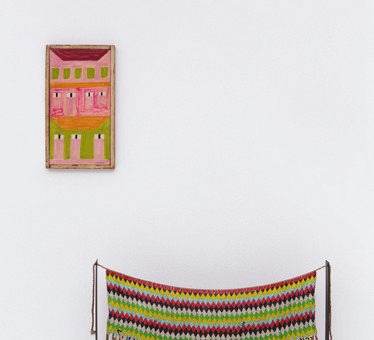Myth Shape

São Paulo, Brasil
22/11/2016 - 14/12/2016
If the Renaissance was the time of recovering the Greco-Roman tradition, Modernism was the period of discovery of the aesthetic production of African tribes by European artists such as Matisse, Picasso, Vlamick and Derain, who sought to break the rules of construction, of proportions and of the aesthetic perspectives of academic art in a world in which they no longer made sense. This new influence, which generated aesthetics such as Cubism, also dialogued with Brazilian artistic movements from 1922 Modernism to concrete movements, such as Dan Galeria presents, from November 24th, in the exhibition Mito|Forma, curated by Peter Cohn and Christian Heymès.
The exhibition brings into dialogue different moments of Brazilian Modernism and Concretism represented by works by artists such as Alfredo Volpi, Ismael Nery, Lygia Clark and Macaparana, with pieces produced by African tribes, such as coins, masks, spades and sculptures that, in their forms , reveal the values, myths and beliefs of different tribes, in a connection made from the form and aesthetic composition of the work, showing the similarities that exist in aesthetics and cultures, at first sight, very different from each other. “The big difference is that the entire composition of pieces by African tribes – coins, sculptures, masks – has a utilitarian purpose, be it spiritual or everyday, while for us the purpose of art is aesthetics”, says Christian Heymès. “That’s not to say that aesthetics aren’t important to them. On the contrary: the more refined the object, aesthetically speaking, the more it will serve its utilitarian function.”
“The dialogue between the works allows us to see how rhythm, balance and tension, fundamental characteristics of Concretism and Neoconcretism, were actually already present in the pieces of African tribes for centuries”, says Peter Cohn. “What for us – as well as for the European modernists – was new, for them was the essence of the aesthetics they produced.”
Among the works in dialogue are, for example, the Facade, by Alfredo Volpi, which connects, through the composition of colors and shapes, with a thong from the Kirdi tribe, from Cameroon, the Modulated Space n.6, by Lygia Clark dialogues through his form – three parts with “leftovers” at the ends – with a bargaining chip, from the MuMuye tribe, from Nigeria. A painting by Rubem Valentim, in turn, is linked from the symbology to the sculpture of a Shango figure, from the Yoruba tribe, also from Nigeria.
Artists: Almir Mavignier, Leon Ferrari, Di Cavalcanti, Alfredo Volpi, Willys de Castro, Antonio Bandeira, Sérgio Camargo, Pablo Picasso, Ismael Nery, Lygia Clark, Macaparana, Dogon tribe, Mumuye tribe, Kissi tribe, Baule tribe, Kirdi tribe, Mumuye tribe, Bamun tribe, New Guinea tribe, Kuba tribe, Kirdi tribe, Wai-wai tribe, Kwele tribe, Luba tribe, Yoruba tribe, Rubem Valentim, Mira Schendel, Sérgio Fingermann, Luiz Sacilotto